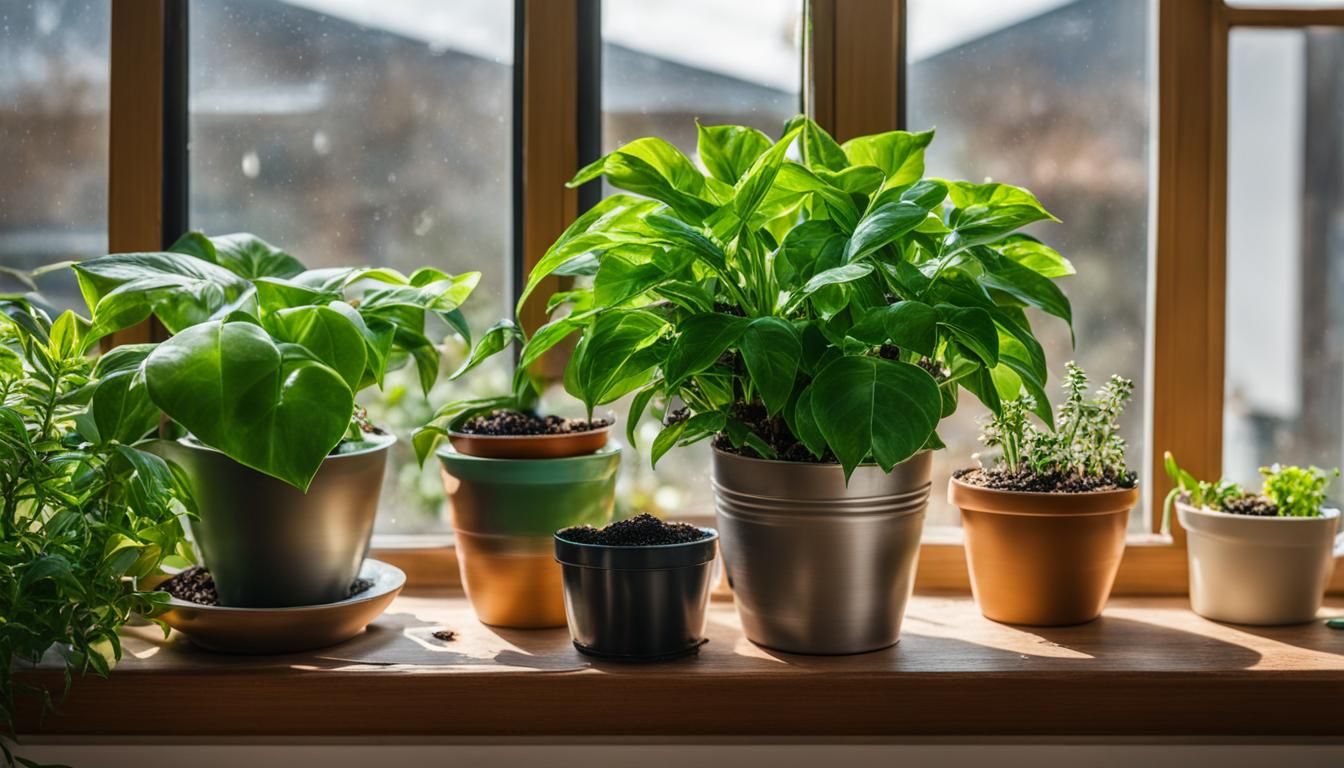
Indoor plants require proper nutrient balancing to thrive. Unlike outdoor gardens, indoor plants have limited access to nutrients from the soil, so supplemental feeding is essential. Fertilizers are commonly used to provide the necessary nutrients for healthy growth.
It’s important to follow instructions on fertilizer labels and avoid overfeeding, as it can harm plants and have environmental consequences. Liquid and slow-release fertilizers are recommended for indoor use, as they provide a steady supply of nutrients.
Key Takeaways:
- Indoor plants require proper nutrient balancing for healthy growth.
- Fertilizers are used to supplement the limited nutrients in the soil.
- Follow instructions on fertilizer labels to avoid overfeeding and harm to plants.
- Liquid and slow-release fertilizers are recommended for indoor use.
- Proper nutrient balancing is essential for the overall health and well-being of indoor plants.
When and how often should indoor plants be fertilized?
Proper fertilization is essential for the healthy growth and thriving of indoor plants. Knowing when and how often to fertilize your plants can help optimize their growth and ensure they receive the necessary nutrients.
Indoor plants should be fertilized during their active growing season, which is typically in the spring and summer months. This is when plants require more nutrients to support their growth. Fertilizing during this time will provide them with the necessary boost.
The frequency of fertilization depends on the type of fertilizer you are using. Liquid fertilizers, which are diluted in water, are often applied every time you water your plants or every other time. This helps provide a steady supply of nutrients.
On the other hand, slow-release fertilizers can last between four and nine months, requiring less frequent applications.
It’s important to carefully follow the instructions on the fertilizer label for the best results. Overfertilizing can do more harm than good, so it’s essential to avoid applying too much fertilizer to prevent nutrient imbalances or damage to the plants.
| Type of Fertilizer | Frequency of Application |
|---|---|
| Liquid Fertilizers | Every watering or every other watering |
| Slow-Release Fertilizers | Every 4-9 months |
By understanding when and how often to fertilize your indoor plants, you can provide them with the necessary nutrients for optimal growth and ensure their overall health and well-being.
What are the different types of indoor plant fertilizers?
When it comes to indoor plant fertilizers, there are several types to choose from. Each type has its own advantages and considerations, so it’s important to understand the differences before selecting the right one for your plants.
Liquid Fertilizers
Liquid fertilizers are a popular choice for indoor plants. They are easy to use and provide a precise control over nutrient supply. Liquid fertilizers are typically diluted in water and applied with a watering can.
This allows for quick absorption by the plant’s roots, delivering essential nutrients directly to where they are needed most. Liquid fertilizers are ideal for plants that require frequent feeding, as they require regular applications.
Slow-Release Fertilizers
Slow-release fertilizers are another option for indoor plant care. These fertilizers are coated with time-release shells that slowly release nutrients into the soil over an extended period.
This means that the plants receive a steady supply of nutrients over time, reducing the need for frequent applications. Slow-release fertilizers are convenient for busy gardeners or for plants that have specific feeding requirements.
Granular Fertilizers
Granular fertilizers are typically used in outdoor gardens but can also be used for indoor plants. These fertilizers come in the form of granules that can be mixed into the potting soil.
Granular fertilizers are not recommended for indoor use as they are harder to control. They can cause nutrient imbalances if not used correctly. It’s best to use granular fertilizers with caution and carefully follow the instructions to avoid harming your indoor plants.
| Fertilizer Type | Pros | Cons |
|---|---|---|
| Liquid Fertilizers | Easy to use, precise control over nutrient supply, quick absorption | Requires regular applications |
| Slow-Release Fertilizers | Delivers nutrients over time, reduces the need for frequent applications | May not provide immediate nutrient availability |
| Granular Fertilizers | Can be used for indoor plants, convenient for outdoor gardens | Harder to control, can cause nutrient imbalances |
Choosing the right type of fertilizer for your indoor plants depends on various factors, including the specific needs of your plants, your gardening preferences, and your schedule.
It’s important to consider these factors and select a fertilizer that suits your needs and the needs of your plants to ensure optimal growth and health.
What nutrients do indoor plants need?
Indoor plants require a specific balance of nutrients to maintain their health and growth. While all plants have varying nutrient needs, there are essential elements that are necessary for their overall well-being.
These nutrients can be classified into macronutrients and micronutrients. Macronutrients are required in larger quantities, while micronutrients are needed in smaller amounts but are equally important for proper plant nutrition.
Macronutrients:
The three primary macronutrients that indoor plants need are nitrogen (N), phosphorus (P), and potassium (K). Nitrogen promotes leaf and stem growth, phosphorus stimulates flowering and root development, and potassium enhances overall plant health and resistance to diseases.
These macronutrients are typically present in all-purpose fertilizers and are essential for the basic nutritional needs of indoor plants.
Micronutrients:
In addition to macronutrients, indoor plants also require micronutrients, albeit in smaller quantities. These micronutrients include elements such as iron (Fe), manganese (Mn), boron (B), zinc (Zn), copper (Cu), molybdenum (Mo), and chlorine (Cl).
These nutrients play crucial roles in various physiological processes, such as chlorophyll formation, enzyme activation, and nutrient absorption.
It’s important to note that the nutrient requirements may vary for different plant species. Some plants may have specific preferences for certain nutrients, while others may require a more balanced nutrient profile.
To ensure optimal nutrition for your indoor plants, it’s recommended to check the fertilizer labels for the nutrient composition and choose a fertilizer that meets their specific needs.
- Indoor plants require a balance of macronutrients and micronutrients for optimal growth.
- The three primary macronutrients are nitrogen (N), phosphorus (P), and potassium (K).
- Micronutrients include elements like iron (Fe), manganese (Mn), boron (B), zinc (Zn), copper (Cu), molybdenum (Mo), and chlorine (Cl).
- The nutrient requirements may vary for different plant species.
- Choosing a fertilizer that provides the necessary nutrients is crucial for maintaining plant health.
When is the best time to fertilize indoor plants?
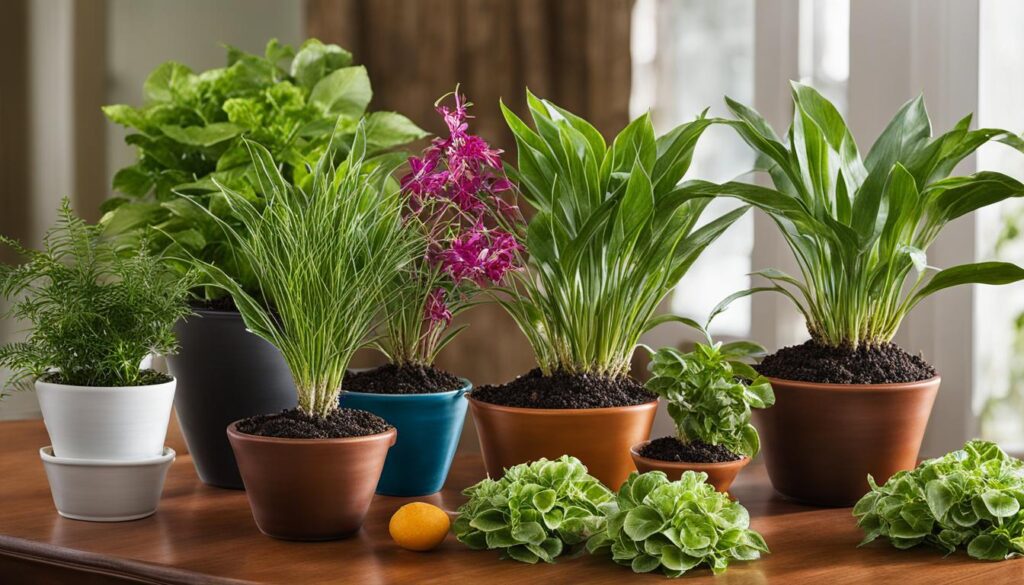
Properly timing the fertilization of indoor plants is crucial for their health and growth. The best time to fertilize houseplants is during their active growing season, which typically occurs in the spring and summer months.
During this time, plants are actively producing new foliage and flowering, and they require a steady supply of nutrients to support their growth.
Fertilizing indoor plants in early spring, about eight weeks before the last expected spring frost, is recommended. This ensures that plants receive the necessary nutrients they need to thrive and blossom.
It’s important to follow the instructions on the fertilizer label for the specific plant species, as different plants have varying nutrient requirements.
As fall approaches and the growing season comes to an end, it’s advisable to taper off fertilizer applications. This allows the plants to naturally transition into their dormant period, where they require less supplemental nutrition.
During the winter months, when indoor plants are in a dormant state, fertilization is not necessary and can even harm the plants. It’s best to wait until the next active growing season to resume fertilizing.
Factors to Consider
While the general rule is to fertilize indoor plants during their active growing season, there are a few factors to consider when determining the best time for fertilization. These include:
- Plant Type: Different plant species have varying nutrient requirements and growing seasons. Research the specific needs of your indoor plants to determine the ideal fertilization schedule.
- Growth Stage: Plants have different growth stages, including vegetative growth, flowering, and fruiting. Adjust your fertilization schedule accordingly to provide the appropriate nutrients during each stage.
- Environmental Conditions: Light intensity, temperature, humidity, and other environmental factors can affect plant growth and nutrient absorption. Consider the unique conditions of your indoor space when deciding when to fertilize.
By considering these factors and fertilizing your indoor plants during their active growing season, you’ll help ensure their optimal health and vibrant growth.
What are the ingredients in indoor plant fertilizers?
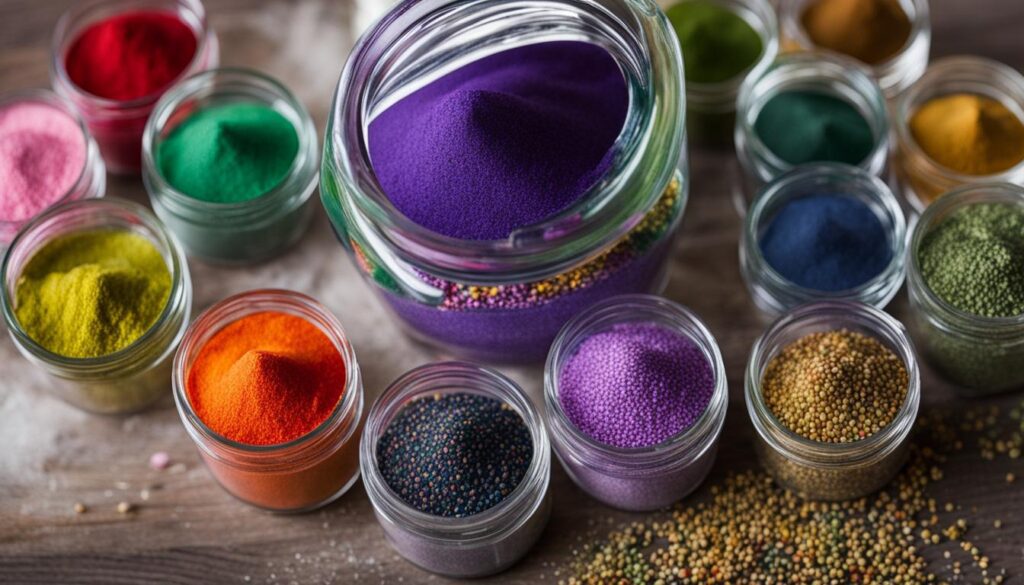
Indoor plant fertilizers contain a combination of macro- and micronutrients that are essential for plant growth. The primary macronutrients are nitrogen, phosphorus, and potassium, also known as NPK.
These nutrients are vital for various aspects of plant health and development. Nitrogen promotes lush foliage growth, phosphorus stimulates flower and fruit production, and potassium strengthens roots and helps plants withstand stress.
In addition to the primary macronutrients, indoor plant fertilizers often include secondary macronutrients like calcium and magnesium.
These nutrients are required in smaller quantities but are still crucial for plant growth. Calcium helps with cell wall development and disease resistance, while magnesium is an essential component of chlorophyll and aids in photosynthesis.
Furthermore, indoor plant fertilizers may also contain micronutrients such as iron, zinc, and boron. These trace elements are necessary in very small amounts but play significant roles in various metabolic processes within the plant.
Iron, for example, is essential for chlorophyll production, while zinc is involved in enzyme activation. Boron contributes to root development and cell division.
| Primary Macronutrients | Secondary Macronutrients | Micronutrients |
|---|---|---|
| Nitrogen (N) | Calcium (Ca) | Iron (Fe) |
| Phosphorus (P) | Magnesium (Mg) | Zinc (Zn) |
| Potassium (K) | Boron (B) |
Organic Fertilizers
In addition to synthetic fertilizers, there are also organic options available for indoor plants. Organic fertilizers are derived from natural sources, such as plant matter, animal by-products, and minerals. They provide a sustainable and environmentally friendly way to nourish your plants.
Some popular organic fertilizers include compost, worm castings, and fish emulsion. Compost is made from decomposed organic matter and provides a rich source of nutrients for plants.
Worm castings, also known as vermicompost, are the waste produced by earthworms and are highly nutritious for plants. Fish emulsion is made from fish waste and is rich in nitrogen, making it especially beneficial for leafy green plants.
Organic fertilizers not only provide essential nutrients but also improve soil structure and microbial activity. They can help build soil fertility over time and create a healthy growing environment for your indoor plants.
Types of Indoor Plant Fertilizers
When it comes to nourishing your indoor plants, there are several types of fertilizers to choose from. Each type has its own benefits and considerations, depending on your plant’s needs and your personal preferences.
One popular option is liquid fertilizers. These are derived from natural ingredients such as liquid kelp and fish emulsion. They are easy to use, as you simply dilute them in water and apply them directly to the soil.
Liquid fertilizers provide essential nutrients and growth-enhancing substances that support healthy plant development.
Another common choice is granular fertilizers. These come in the form of loose pellets or compressed spikes. Granular fertilizers can be sprinkled on the soil or mixed into the potting mix.
They release nutrients slowly over time, providing a steady supply to your plants. Granular fertilizers are especially convenient for those who prefer less frequent applications.
If you prefer a more natural approach, you can opt for natural or organic fertilizers. These can include items you may already have in your kitchen, such as coffee grounds, banana peels, and eggshells.
These natural ingredients provide a source of nutrients that can benefit your indoor plants. Organic fertilizers are an environmentally friendly option that promotes sustainable and eco-conscious gardening practices.
FAQ
What are the methods for indoor plant nutrient balancing?
Indoor plants require proper nutrient balancing to thrive. Supplemental feeding with fertilizers is essential for indoor plants, as they have limited access to nutrients from the soil. Liquid and slow-release fertilizers are recommended for indoor use, as they provide a steady supply of nutrients.
When and how often should indoor plants be fertilized?
Indoor plants should be fertilized during their active growing season, which is typically in spring and summer. The frequency of fertilization depends on the type of fertilizer and the specific plant’s needs. Liquid fertilizers are often applied every time the plant is watered or every other time, while slow-release fertilizers require less frequent applications.
What are the different types of indoor plant fertilizers?
There are several types of fertilizers available for indoor plants. Liquid fertilizers are diluted in water and applied with a watering can, providing precise control over nutrient supply. Slow-release fertilizers are coated with time-release shells and slowly release nutrients into the soil over an extended period. Granular fertilizers, although not recommended for indoor use, can be mixed into the potting soil.
What nutrients do indoor plants need?
Indoor plants require specific nutrients to support their growth. All-purpose fertilizers usually contain the three primary macronutrients: nitrogen, phosphorus, and potassium. These promote healthy foliage growth, encourage blooms, and support root development, respectively. Better-quality fertilizers also contain micronutrients like boron, magnesium, and manganese, which contribute to overall plant health.
When is the best time to fertilize indoor plants?
The best time to fertilize indoor plants is during their active growing season, typically in spring and summer. Fertilizing in early spring, about eight weeks before the last expected spring frost, is recommended to ensure plants receive the nutrients they need for healthy growth. In fall, as the growing season comes to an end, it’s advised to taper off fertilizer applications. Fertilization is not necessary during winter when plants are dormant.
What are the ingredients in indoor plant fertilizers?
Indoor plant fertilizers usually contain a mixture of macro- and micronutrients necessary for plant growth. The three primary macronutrients, nitrogen, phosphorus, and potassium, are listed as a ratio on the fertilizer label. Better-quality fertilizers also include secondary macronutrients like calcium and magnesium, as well as micronutrients like iron, zinc, and boron. Organic fertilizers, made from plant-, animal-, and mineral-based components, are also an environmentally friendly option.
What are the types of indoor plant fertilizers?
There are various types of fertilizers available for indoor plants, including liquid fertilizers, granular fertilizers, and natural/organic fertilizers. Liquid fertilizers, such as liquid kelp and fish emulsion, are derived from natural ingredients and provide essential nutrients and growth-enhancing substances. Granular fertilizers can be sprinkled on the soil or mixed into the potting mix. Natural fertilizers, like coffee grounds, banana peels, and eggshells, can also be used as a source of nutrients for indoor plants.

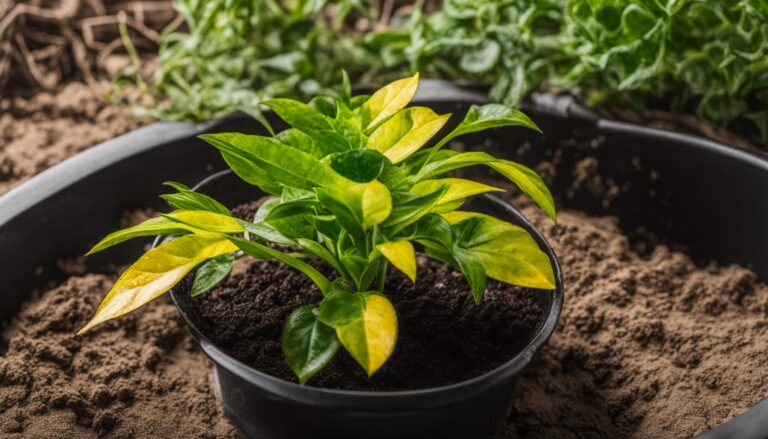
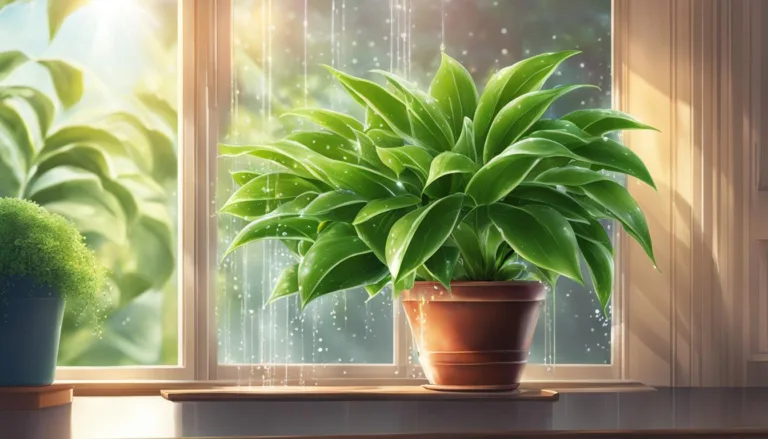

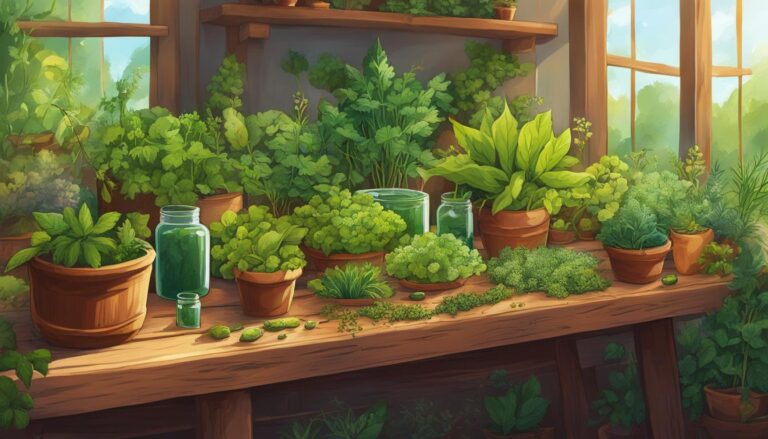


3 Comments
Comments are closed.